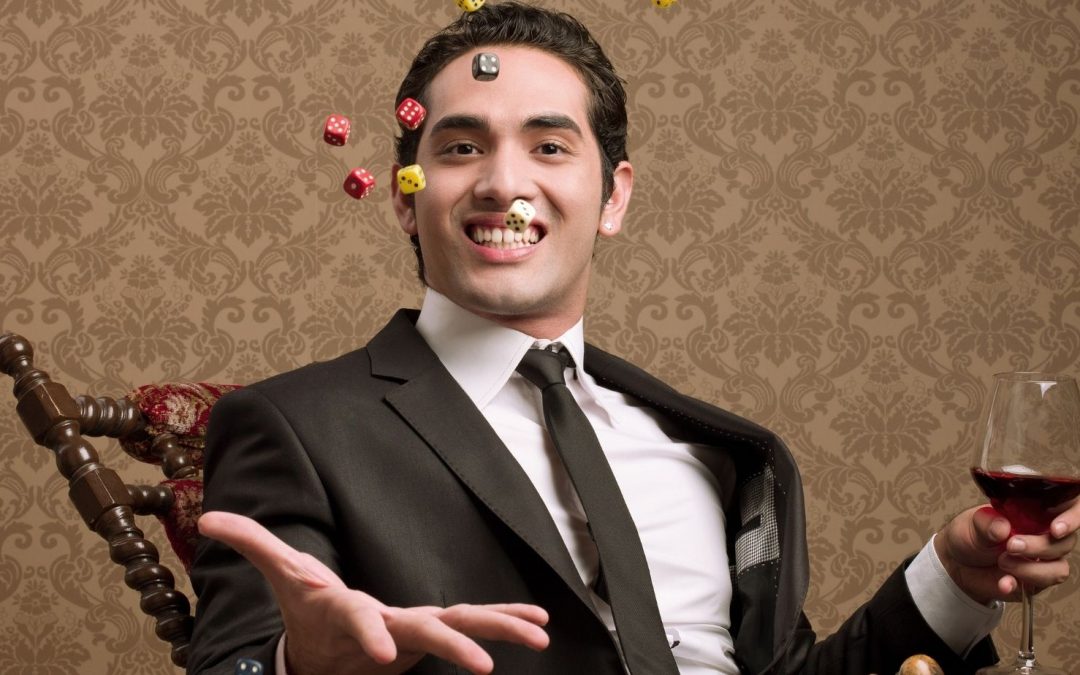It would be strange if artists passed over such a widespread pastime as card games and such a striking spectacle as casino interiors. Of course, artists have looked at the world of gambling in the past and are looking at it today, from their own perspective: they are less concerned with winnings, non gamstop no deposit bonus, Martingale strategies, and other things that are important to gamblers. What matters most to artists is the people, their passions and their characters as they play. This is evidenced by the most famous paintings on the subject of gambling, from Caravaggio’s The Gamblers (16th century) to Wilkerson’s Queen of the Slot Machines (2011).
How gamblers were depicted from antiquity to the 18th century
We can see how ancient Greek artists approached the theme of gambling from the vases that have survived to this day. They often depict the two legendary heroes, Achilles and Ajax, at dice, and the gamblers’ facial expressions are reproduced very realistically. It is important that in ancient Greece and ancient Rome, dice for money was not considered anything wrong, and its picture was included in the normal range of everyday subjects. Thus, archaeologists found in one of the villas of Pompeii a mosaic depicting four people: two of them playing dice and two watching the players with interest.
During the Renaissance, with the light hand (or rather, the light brush) of the famous Italian master painter Michelangelo da Caravaggio, the approach changed. His painting The Cheat (1594) tells the viewer a whole story of a gullible young man caught in the net of tricksters. What preceded the moment depicted on the canvas, it is not difficult to guess, and the future course of events hints at a dagger at the waist of one of the rustlers. The canvas was a great success and spawned a mass of imitations. In particular, the paintings by the 17th-century French painters, the Lenin brothers, were very popular, with the eloquent titles The Card Players and The Cartwrights. The artists realised that by appealing to the theme of the game, they could create dramatic images full of profound psychology and at the same time stigmatise unscrupulous gamblers. (The Cheaters, by the way, are now in the United States, in the Kimbell Museum in Fort Worth, Texas).
Casinos and cards in 19th-century European painting
In 19th-century Western European painting, the theme of gambling is inseparable from that of casinos. Gambling houses were portrayed by artists as varied as the expressionist Edvard Munch (Norway), the realists Christian Bockelmann (Germany) and Jean-Eugène Boulant (France). For Munch, who devoted much energy and time to roulette, the game is part of that tormenting obsession that is captured in his most famous painting, The Scream. The Norwegian painter depicts the casino and its atmosphere in the bleakest colours. Bulan was not far off in his famous painting A Gambling Haven (1883). The gamblers are doomed, for they are clearly losing their last pennies.
Christian Bockelmann is somewhat more optimistic: his Casino de Monte Carlo (1884) portrays the world of roulette as lively, frivolous and at the same time radiant. The Italian Pompeo Mariani painted the same bright, luxurious and alluring image of the casino, with its players often including elegant ladies of light and semi-light. And in a series of paintings by post-impressionist painter Paul Cézanne (France), devoted, however, not to roulette but to cards, the game is seen as a peaceful and harmless hobby of peasants to relax after a hard day.
Most famous American gambling pictures
It’s hard to find an American with even a passing interest in gambling who hasn’t seen one of Cassius Marcellus Coolidge’s (1844-1834) nine paintings of dogs playing poker. At the poker table, Coolidge gathers dogs of different breeds and with different personalities, in a grotesque reflection of the diversity of people united by their love of gambling. Undoubtedly, the artistic level “Daredevil Bluff” and “Waterloo” from the series “Dogs playing poker” (1903) can not compete with the masterpieces of the Renaissance, but this did not prevent them from being sold in 2005 at New York auction for nearly 600 thousand dollars.
Whereas Coolidge favoured allegory, Leroy Niemann (1921-2012), a popular expressionist painter, balances the balance in his 1994 silkscreen “Baccarat. “Baccarat” balances irony and admiration. Half-naked women, chic interiors, and a saturated colour scheme help create the image of the casino as an establishment where the middle and upper classes can give vent to their vanity and lust for enrichment by betting big. “Baccarat literally radiates the energy of excitement that every player feels.
The mood is very different in Shelley Wilkerson’s humorous 2011 film. Her ‘Queen of the Slot Machines’ is a sweet, cheerful old lady who doesn’t want to give up the little pleasures: a glass of wine, smart clothes, a bright manicure. She is so infectiously happy about her winnings that the viewer unwillingly begins to smile. The world of gambling, as interpreted by Wilkerson, is not a dangerous mire or territory of violent passions but just a place where everyone can get their portion of positive emotions.



